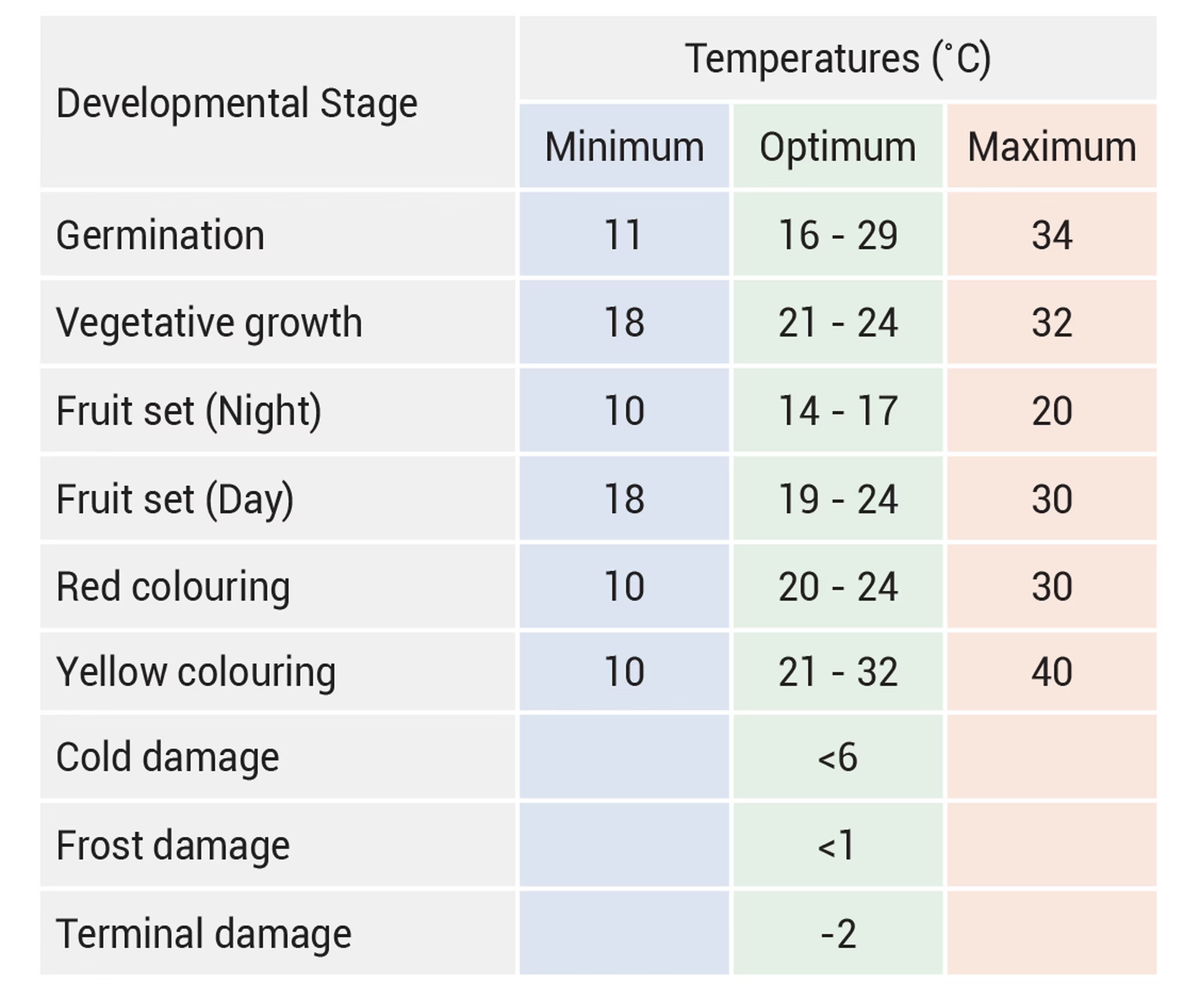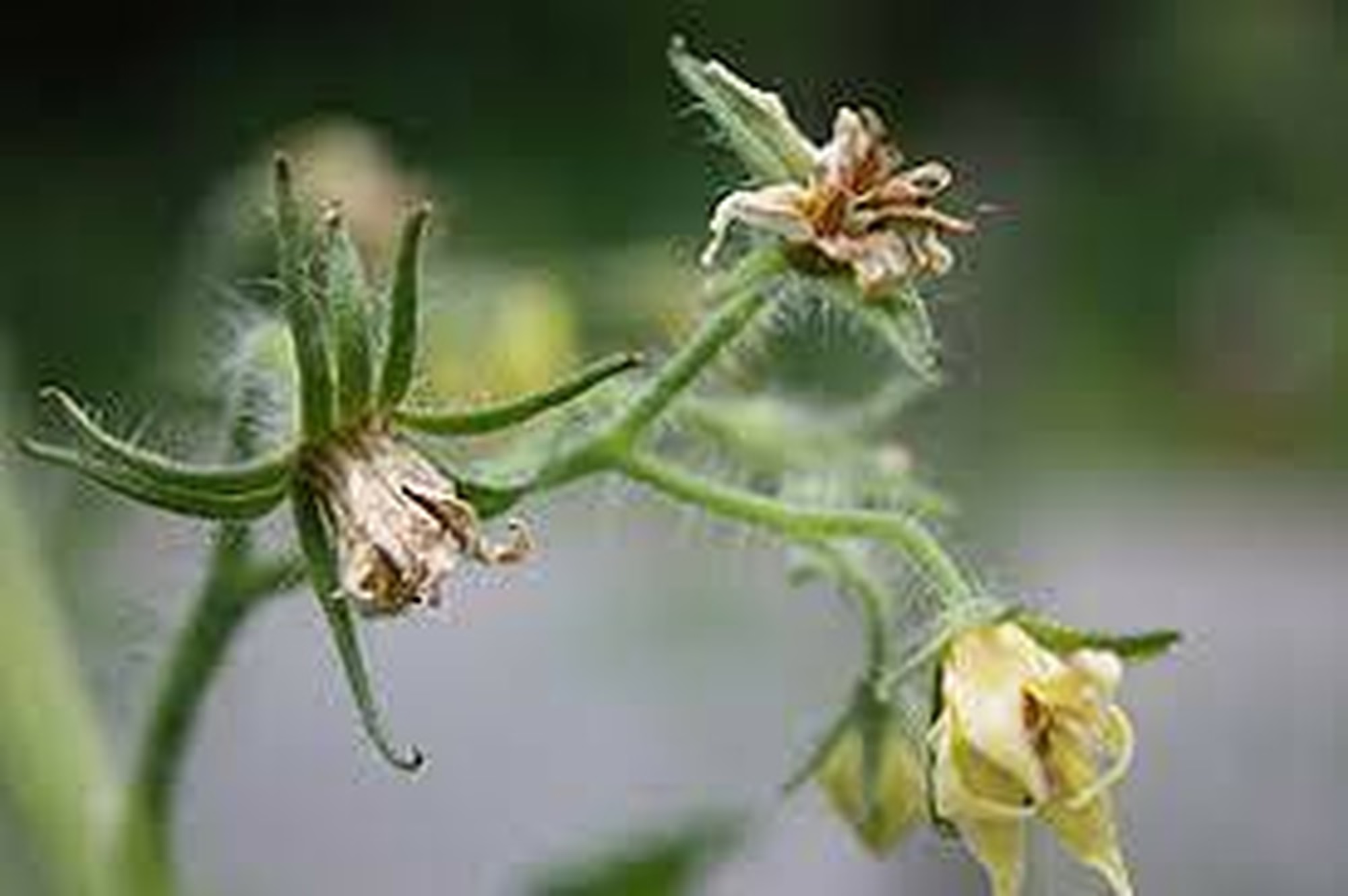Temperature and available light are two of the most important factors when determining planting times. The following information is intended to help growers make correct decisions when planning.
The wide variation in climate in South Africa allows year-round, open-field planting and production of good quality fresh tomatoes. Tomatoes are always in production somewhere in the country.
Tomatoes are known to be a warm season crop. It can survive some cold but is not tolerant to very low temperatures. A top-class tomato crop requires a stable temperature range with minimums and maximums not too far apart. Wide temperature variation often results in poor fruit quality or reduced yields. The minimum temperature is around 10˚C with the maximum being 34˚C. The optimum temperature is between 26 and 29˚C.
For the optimal development of the tomato plant, a relative humidity between 65% and 85% is required. Higher relative humidity levels negatively influence pollen release and distribution on the stigma. High humidity also creates a favourable environment for the development of various foliar diseases. The incidence of blotchy ripening also increases at high humidity. Conversely, low relative humidity may cause infertility, due to pollen drying out before germination of the pollen on the stigma, which leads to small, deformed or hollow fruit.
At relatively low humidity and high temperature, evaporation from the leaves is rapid. If the root system is unable to supply the water volume required, it may lead to partial wilting of the growth tip and increase the incidence of blossom-end rot later in the season.
The simple answer to questions on daylight requirements for tomatoes is that you need a minimum of six hours daylight to produce fruit, but eight or more hours will produce the best results in terms of number of fruits per plant.
Plants need energy to produce fruit. Therefore the more sunshine the more fruit. Early in the spring season when days are still short, tomatoes tend to take a longer time to produce. It’ is important to understand that tomato plants need light to grow, but the fruit themselves do not need sunlight to ripen. Fruit actually ripens fastest in the absence of direct light. The ripening process is more dependent on the combination of heat and ethylene gas. In some regions of South Africa, it is recommended that spring planting be delayed until sunlight hours and heat units are sufficient to sustain constant growth. In some cases, later plantings may even produce a crop before earlier plantings. If plantings can be timed to best effect, both production cost and unnecessary stress on plants will be reduced.


Tomato catfacing on vine

Blossom drop

Baby tomato